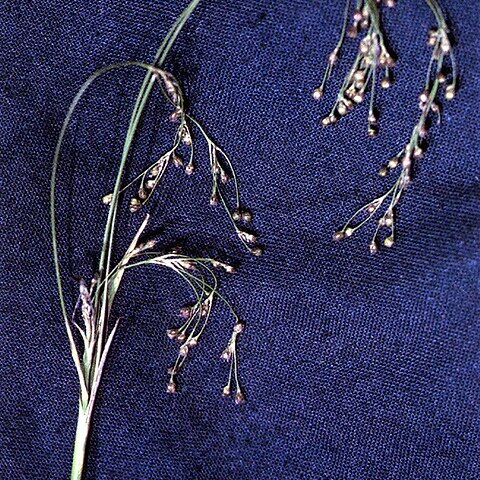Stems ± clustered on short rhizomes, 3–9 dm; lvs glabrous at maturity, basal and cauline (the cauline often 4 or more), the blade 4–20 cm × 5–13 mm, gradually tapering to a firm, slender tip; infl 5–12 cm, decompound, with loosely spreading filiform branches, the fls terminal, solitary or seldom paired; bracts entire to slightly lacerate; tep pale brown, almost translucent and virtually nerveless, 1.7–2.5 mm, lance-ovate, acute or mucronulate; anthers from a little shorter to a little longer than the filaments; fr dark-brown to purple-brown or blackish-brown, 2–2.7 mm, mucronulate, surpassing the tep; seeds ellipsoid, 1.1–1.4 mm, remaining attached to the placenta by a tuft of long hairs; 2n=24. Moist or wet, wooded or open, often rocky places; circumboreal, s. to the mts. of N. Engl. and N.Y., Isle Royale in Mich., n. Minn., and the w. cordillera. Our plants are var. melanocarpa (Michx.) Buchenau.
Plants usually laxly tufted, 16--60 cm tall. Stems terete, 1.2--3.5 mm in diam. Basal leaves grasslike; leaf blade 4--12 cm × 5--10 mm, glabrous, apex acuminate. Cauline leaves 2 or 3. Inflorescence terminal or occasionally axillary, umbel-like, more than 30-flowered; basal involucral bract leaflike, 2.5--4 cm. Flower solitary; pedicel slender; bracteoles ovate, margin subentire to lacerate. Perianth segments pale purplish red to brownish, lanceolate, 1.5--2.2 × ca. 0.8 mm, subequal, apex acute. Filaments ca. 0.5 mm; anthers ca. 0.5 mm. Style shorter than or subequaling ovary; stigmas ca. 1 mm. Capsule blackish brown at maturity, trigonous ovoid, ca. 2 mm, apex mucronate. Seeds reddish brown, ellipsoid, ca. 1.3 mm; appendage inconspicuous. Fl. Jun--Jul, fr. Aug--Sep. 2 n = 24.

